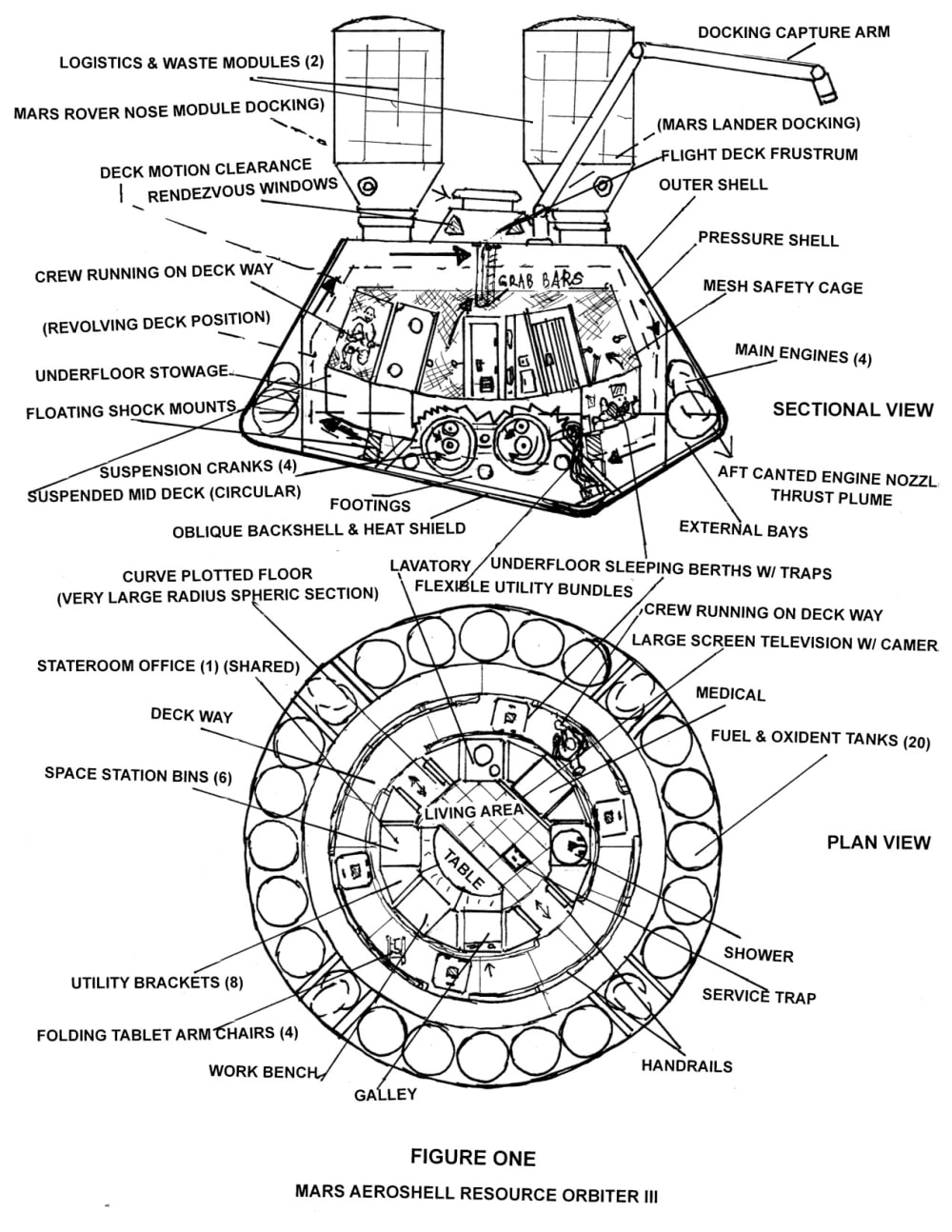Orbiter mid deck is circular. Its floor has a spheric section curve of very large radius, as if it were a piece of a giant sphere hundreds of feet in diameter. Its imaginary center of revolution is hundreds of feet above.
Deck revolves, rather than rotate as in earlier concepts for artificial gravity spacecraft. Deck is open like a platform, not closed like a "hamster wheel" (Figure One).
Revolving motion produces angular momentum, mimicking the force of Earth's gravity. In outer space muscles, bones and the heart weaken for lack of gravity's resistance.
Set of crank wheels lift the deck from underneath in a revolving motion, driven by electric motors or MagLev means (not shown). Floating shock mounts control vibration and oscillation as deck moves. Service trap accesses below deck, which houses cranks; structural footings; and flexible umbilical bundles between deck and orbiter mains.
Mid deck has storage and horizontal sleeping berths for crew of four under its outer deck way, enclosed by a mesh safety cage. Handrails aid walking and running for exercise around the circular path.
Two openings pass through a ring of six space station bins, secured by eight utility brackets. These enclose a central living area with a table; large screen television with camera; galley; lavatory; shower; shared stateroom office; workbench; and medical station. Folding tablet arm chairs are used for seated work. Some bins such as the galley may face the deckway side to give more room for access.
Orbiter is 34ft in diameter, having a truncated regular upper cone and an oblique backshell and heat shield. It is launched by a large carrier rocket and inserted by an upper stage into a trajectory to Mars.
Four canted main engines in the rim propel orbiter forward. External bays also house twenty fuel and oxidant tanks. To enter orbit of Mars, orbiter turns it's large heat shield forward and slows down by friction with its upper atmosphere. It stays in Mars orbit during expedition and later boosts back to Earth.
Top facet of orbiter has a smaller center frustrum, housing the flight deck, with rendezvous windows, and a docking capture arm to dock and move ferried modules. Flight deck is accessed by pulling off from the mid deck via ceiling grab bars into weightlessness above. Transfer of supplies and trash through ceiling hatches may require temporarily stopping the revolving deck.
Four more docking ports are around the top: Two for logistics and waste modules; and two for a Mars lander and its rover.
The rover rides on the lander's nose for Mars landing (not shown), but is docked separately en route to Mars. Fuel for the lander is transferred to the orbiter's tanks until departure to lower center of gravity for aerocapture. The orbiter's heat shield shelters the lander and logistics modules in its wake.
MAREO III provides propulsion and aerocapture, long duration crew habitation, a replenishable supply system and lander ferrying for expeditions to Mars and perhaps other Near Earth destinations.
Video
Like this entry?
-
About the Entrant
- Name:Leonard J Holmin
- Type of entry:individual
- Software used for this entry:None.
- Patent status:none

